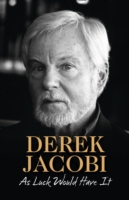Full Description
Learn to observe, teach, and analyze human movement.
The second edition of Laban/Bartenieff Movement Studies: Contemporary Applications offers a framework for understanding movement as it influences our perceptions of ourselves and others. Readers will be guided through the framework so that they learn what movement analysis is, how it works, and how they can use it in their daily lives.
Now updated to include the following:
Expanded coverage of the foundations of Laban/Bartenieff Movement Analysis (L/BMA) theory and taxonomy
New contributed essays from experts in the dance field and beyond
Further explanation of initiation
Addition of space harmony
New appendix providing a brief overview of motif
An essential resource for L/BMA, this text provides a wealth of information about the many applications of movement analysis: developing a fuller range of movement and expression in the moving body, developing choreography, coaching and teaching movement, observing and describing how movement is meaningful, and more.
Organized into three parts, Laban/Bartenieff Movement Studies, Second Edition, takes readers through the history and guiding concepts of L/BMA in part I. In part II, readers explore the four categories of the L/BMA framework-body, effort, shape, and space-as well as phrasing. This section provides an understanding of the elements of movement and focuses on why each element is useful. Part III integrates what was learned in parts I and II into a comprehensive picture of human movement and applies it to daily life in meaningful ways, including new application essays from certified Laban/Bartenieff Movement Analysts.
With Laban/Bartenieff Movement Studies, Second Edition, readers will learn to perceive human movement with greater nuance and specificity through observation and interpretation.
Contents
Part I. Foundations of Laban/Bartenieff Movement Studies
Chapter 1. Overview of Laban/Bartenieff Movement Analysis
L/BMA teaches you to perceive human movement through an elemental and integrated framework
Chapter 2. Guiding Concepts and Organizing Themes
Movement is complex and needs to be perceived through a multitude of layers and perspectives
Part II. The Lens of Laban/Bartenieff Movement Studies
Chapter 3. Body
The physical body-the tangible, graspable body you live in, complete with its muscles, bones, and sinew
Chapter 4. Effort
The dynamic energy and feeling tones present in movement
Chapter 5. Shape
The form and forming processes of the body; the edges and curves of the body and how they change
Chapter 6. Space
How the body moves through the space around it
Chapter 7. Phrasing
The overtime and through time unfolding patterns of movement
Part III. Integrating and Applying BESS
Chapter 8. Using Laban/Bartenieff Movement Analysis in Your Life
Use L/BMA to shed new light on your interests
Chapter 9. Laban/Bartenieff Movement Analysis in Action
Contributors share how they use L/BMA in diverse ways in their lives and careers
Appendix. Motif: The Symbolic Score for Writing Movement








